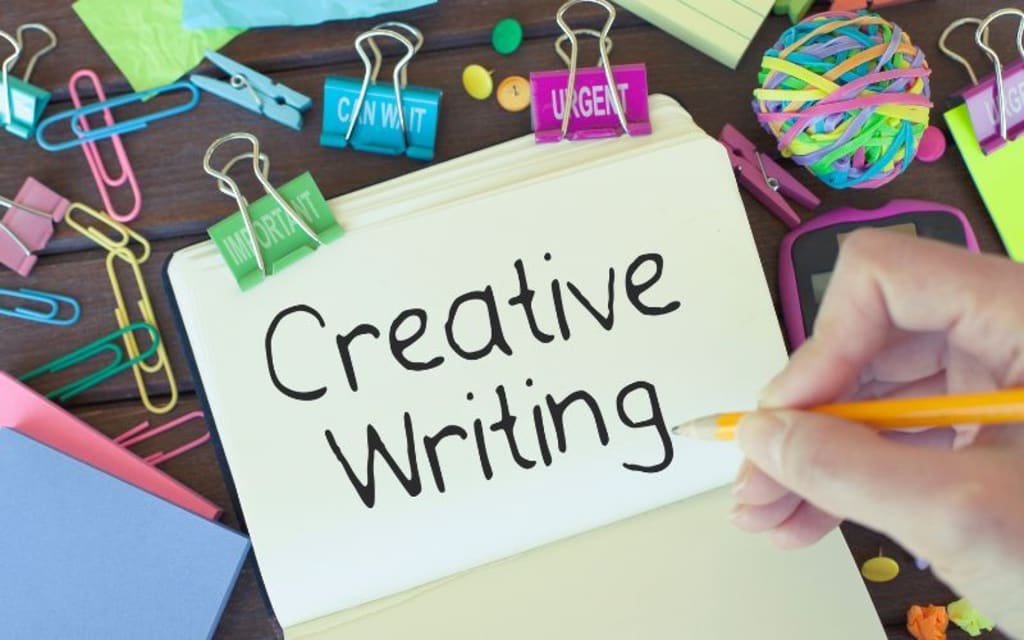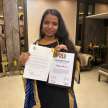Content warning
This story may contain sensitive material or discuss topics that some readers may find distressing. Reader discretion is advised. The views and opinions expressed in this story are those of the author and do not necessarily reflect the official policy or position of Vocal.
Mastering the Craft: How to Edit and Revise Your Creative Writing
Creative writers are often great orators and storytellers who have mastered the art of narrating a story with their words both written and verbal. They are well established in the science of verbal and nonverbal communication which helps them understand the reader's psyche and curate a story that creates a long-lasting impression on their Minds.

Creativity speaks a thousand words that no grandiose gesture ever can express. We often define creativity as the art of expressing one’s opinions through different creative outlets. Creativity is the essence of every decision we take; it is the catalyst that equips us to think over the conventional bounds of a perceived notion. The flow of performing various tasks coherently with a spark of unconventional ideas marks the essence of creativity. Whether it be media houses, the publishing industry, business magnates or authors, creativity pioneers the process of brainstorming and building brands that leave an impact on the lives of consumers.
Creative writing can be often defined as the free expression of words that use fantasy and imaginative themes to bring out refreshing stories and symbolism to the brand or the plot required. Creative writers are often great orators and storytellers who have mastered the art of narrating a story with their words both written and verbal. They are well established in the science of verbal and nonverbal communication which helps them understand the reader's psyche and curate a story that creates a long-lasting impression on their Minds.
Creativity is often said to be a trait people are born with, but as simple as it sounds creative writing can be mastered by consistent practice. In this article, we discuss how we can learn creative writing through its entirety.
What is creative writing?
Creative writing is intended to evoke an emotion in the reader by telling them about a topic. In storytelling (including books, movies, graphic novels, fiction, and many video games), a theme is the centerpiece of the work. Take the movie (and the novel it's based on) Jaws, for example. The story is about a shark that threatens a marine community and the men assigned to kill the shark. But the film's themes include humans' desire to control nature, tradition versus innovation, and how profit can lead those in power to make dangerous, even deadly, decisions.
A theme is not the only thing that defines creativity. Here are some other common features of creative writing:
1. Connect, or at least try to connect with the reader's feelings
2. Write from a specific point of view
3. Organize the text around the storyline
4. Story structure can be complex or simple and serves to shape how the reader interacts with the content.
5. Use descriptive and/or descriptive language
Creative writing generally uses literary devices such as examples and metaphors to build a story and express a theme, but this is not a requirement. There is also no dialogue, although you will see it used in many works of fiction. Creative writing does not have to be fiction either. Real life stories, autobiographies and lyrical essays are all forms of creative writing. What is not a text? In contrast, research papers are not creative writing. Nor is it a research essay, a persuasive essay, or any other type of academic essay. Similarly, personal, and professional communications are not considered natural writing, so your email, social media, and official office statements are all firmly in the no-writing zone.
These types of texts convey information, but they do not convey a theme. Their purpose is to communicate and educate, and in some cases to collect information from readers. And although they may inspire readers, that is not their primary purpose. But what about things like blog posts? Or a personal essay? These are broad categories, and specific pieces in these categories can qualify as creative writing if they meet the criteria listed above. This blog post, for example, is not creative because it wants to explain, but a blog that guides the reader through a first-person account of an event can be creatively written.
Creative Writing helps you understand the writing styles in a better way
Creative writing styles
Creative writing comes in many forms. These are the most popular:
1. Novels-The novels were born in the 18th century. Today, when people think of books, most think of newspapers. Novels are short stories that are usually told in 60,000 to 100,000 words, although they can be as short as 40,000 words or over 100,000. Stories that are short enough to be novels, but cannot be properly called short stories are often called short stories. In general, stories between 10,000 and 40,000 words are considered short stories. You may also see the word "novelette", which is used to refer to stories between 7,500 and 19,000 words.
2. A short story
A short story is a piece of fiction usually between 5,000 and 10,000 words. Like novels, they tell a complete story and have at least one character, some kind of conflict, and at least one theme. When a story is less than 1,000 words, it is classified as a work of fiction. Creative writing courses in Leeds help you learn about writing a short story
3. Song
Poetry can be difficult to describe because as a genre it is open. Songs do not have to be long. It does not have to be loud. There are many forms of poetry from cultures around the world, such as sonnets, haikus, sestinas, open verse, limericks, and blank verse. The rules of poetry often change unless you are writing a specific type of poem, such as haiku, that has specific rules about numbers or structure. And although a poem does not have to conform to any specific length or structure, or use perfect rhythm, it must move the reader's feelings, from a certain point of view. look and express the subject. And when you put poetry and music, you have music.
4. Sports, TV shows and movies The pieces are intended to be performed on stage. Scripts are meant to be made into movies; TV scripts are meant to be made into TV programs. Video articles produced for other platforms fit ito this category. Plays, television shows, and movies have a lot to do with novels and short stories. They tell stories that evoke emotions and present themes. The difference is that they are meant to be translated rather than read, so they tend to be more conversational because they do not have the luxury of long explanatory sections. But writers have more than just a working dialogue; Writing a play or film also includes stage writing or stage direction. Each type of script has its formatting requirements.
A non-fictional creation
Creative writing covers creative non-fiction covers all types of non-fiction writing. Here are some examples:
o Personal Essay: A personal essay is an accurate story told through a narrative structure. Often, memories of events are combined with thoughts about those events and descriptions of yourself and your feelings about them in this type of writing.
o Literary Journal: Think of a literary journal as a novel that complements the creative writing process. It's the kind of story that's often published in outlets like The New Yorker and Salon. Narrative essays tell stories but do so in a way that makes them look like personal essays and short stories.
o Memoirs: Memoirs are too personal writing and novels are too short stories. In other words, a memoir is a long-term collection of personal recollections, usually based on a specific story, which often includes thoughts, epiphanies, and emotional insights into the story.
o Autobiographies: Autobiographies are books you write about yourself and your life. Often, autobiographies highlight major events and may focus on one aspect of the writer's life, such as his career as a technology developer or his career doing professional sports. Histories are often in the form of memoirs, but instead of being a collection of memories centred around a particular event, they often tell the story of the author's life in chronological order.
o Humorous writing: Humorous writing comes in many forms, such as comedy series, political dramas, and humorous essays.
o Lyrical Essays: In poetry, the writer breaks the rules of grammar and style when writing about an idea, event, place, or feeling. In this way, an essay is like a long poem. The reason they are considered essays, not long poems, is that they often provide a more specific analysis of the subject than a poem would.
Skills you need to have to be a creative writer
1. A distinct voice- Every writer needs to have a unique voice of his own, it is very important to not get submerged by the requirements of the clients and lose your tonality in writing. Your individualistic style and tone of writing should never be lost amidst the expectations of writing with perfectionism and a rich vocabulary.
2. Good command over words- A creative writer should have a very good command over words. They should know which word would perfectly fit where and how their words would be perceived by the readers. An enriched vocabulary of words enhances the quality of your work. However, try to be as clear and precise as you could be and avoid technical jargon.
3. Storyteller- A good writer is also a good storyteller. Storytelling is the art of playing with words to create a story in the minds of the audience. Writers must know how to narrate their stories with the syllables they bind their writeups with
4. Ambition and Patience- This field requires a lot of patience and perseverance. It would take a lot of failed attempts and consistent writing to become a recognized writer. You have been excited about writing something new every day though you do not have the motivation. Discipline makes a writer set goals for himself and is focused on achieving them.
5. Reading- A writer is also a reader. A writer needs to be a reader and it cannot be emphasized enough. Reading books opens your mind to a plethora of imaginative plots and storylines and can help you find your eureka moment for your writing.
6. Tenacity- A writer needs to be thick-skinned. You should be able to take criticism well. Essentially filtering out constructive criticism and deriving lessons from it helps you improve as a writer.
7. Versatility as a writer- As a creative writer you are expected to deliver unique and fresh pieces every day. It is often a tasking job to produce new content daily. A creative writer should be well-versed in different forms of content to be best at his work.
What is writer's block and how to tackle it?
Creativity is a state of mind in which the brain functions in the flow state. It is something which happens naturally and cannot be induced. Artists and writers often deal with creative block, where their mind is overstimulated with thoughts and their creative juices are obstructed by the fear of not being creative. Writers frequently have their stimulated periods over the year where their art does not naturally come to them. It becomes difficult to even write a single piece that oozes out their creativity and makes them believe in themselves. Experiencing a creative/writing block can oftentimes be frustrating and rejecting. Creative writers are expected to deliver a story that differentiates itself from others easily.
In their writing block here are certain practices that they follow to eliminate writer’s block
7 activities that help you deal with writer’s block
1)Journaling- Jotting down your thoughts, in a free flow of writing and observing them greatly helps during writer’s block. Rant journaling and plot-based journaling are two ways of being self-aware of your thoughts and surroundings.
2)Reading- Exposing yourself to the fantastical world of imaginative realities of various authors allows your mind to wander and break the monotony. As a writer, it is important to be open and explore new perspectives in the world. Reading will help you relax your mind and generate new ideas.
3)Talking to new people- Gaining new perspectives from people completely new to your domain and broadening your horizons will always help you to get out of the rut
4)Poetry/Writing workshops- Workshops that help you get creative are always a great start in leveraging your writing skills. Writing workshops often help you write systematically and give you insightful feedback on your writing. Prompts that are given often help build a consistent writing habit.
5)Competitions- Writing competitions are always a great way to start writing again. In a competitive environment, productivity often thrives.
6)Meditation- You can only write well only when you have a calm state of mind. Being calm and composed often helps you come out of the mental rut and ink it on a piece of paper.
7)Exercising- Going out in the sun and moving your body often re energizes you and inspires you to write.
Frequently asked questions
1)What are the careers that can be pursued in creative writing?
-As a creative writer you can be a scriptwriter, a brand manager, a songwriter, a novelist, an author, a poet, a professor etc. Creative writing marks its application in marketing, designing and content writing as well. You can become a creative writer by studying specializations in the same or by attending workshops and masterclasses.
2)How much do creative writers earn?
As of July 2021, the typical salary for a creative writing position was around $63,395 per year or about $30 per hour. If you have some experience writing, a solid education in writing, or a combination of the two, you may expect to be paid in this range.
3)What is the basic difference between creative writing and technical writing?
Technical writing, in contrast to creative writing, does not need to arouse the reader's emotions; instead, it aims to present complex information in a way that is simple to read and understand. Creativity is still possible in technical writing. It is a nuanced kind of writing that demands a high level of usability and comprehension.
Conclusion
Creative writing is a type of writing where the focus is on the author's creativity. Examples of this type of writing include poetry, short stories, novels, and other works that employ strong written images and emotional effects to tell a story. There are a wide variety of writing styles. You already know that not all writing reads the same way. While other types of writing often merely leave the reader with facts and information instead of emotional intrigue, creative writing employs senses and emotions to build a vivid vision in the reader's mind.
-Hridya.
About the Creator
Enjoyed the story? Support the Creator.
Subscribe for free to receive all their stories in your feed. You could also pledge your support or give them a one-off tip, letting them know you appreciate their work.






Comments
There are no comments for this story
Be the first to respond and start the conversation.